Monday Dec 29, 2025
Monday Dec 29, 2025
Tuesday, 5 February 2019 00:22 - - {{hitsCtrl.values.hits}}
In search of a story
Professor Simon Anholt, who coined the term ‘nation brand’, once asked, “If the hand of God should accidentally slip on the celestial keyboard tomorrow and hit delete and Britain went, who would notice and why?” 
I would like to ask the same question of Sri Lanka. After all, good leadership is largely about providing people with a meaningful narrative – a cohesive story that weaves together the significant characters and events of a community or country into a plot that articulates who they are, and who they strive to be.
I was recently reading New York Times journalist Barbara Crossette’s interview with JR Jayewardene in which she portrays a president with a decidedly Neroesque stance; a leader who increasingly lost touch with reality, fanning the flames as his country burned and bruising the economic revival he was largely responsible for ushering in. Jayewardene “serenely” told her, Crossette writes, that “Sri Lanka withstood several coups and assassinations and attempts to overthrow democracy. In the midst of all that, it seems to be quite strong.”
Much of post-independence Sri Lanka’s narrative describes this remarkable national character of resilience and endurance – the essential Sri Lankan spirit of jumping hurdles, achieving individual greatness, and preserving and caring for each other – subsumed within a broader ‘total national story’ of repeated conflict and discord, largely of its peoples’ and leaders’ own making.
Some of the contributors to this feature – like Krishan Balendra, Dilhan Fernando, Shalin Balasuriya, and Dharshan Munidasa – believe we are on the cusp of change, renewal and rebirth – a moment impregnated with possibility – that now needs to be actualized through policy, reform, and behavioral change; externally, it would require products, services, initiatives and innovations that demonstrate the veracity of our new story to the world.
Others – like Dr Michael Roberts, Asoka Hettigoda, Angeline Ondaatjie, and Sunil Perera – were less sanguine, and perhaps rightly so. For without a common story and purpose to bind us, we drift; without faith in a future, we become migrants hoping to realize our purpose and potential in new lands; without fixed points and dependable narratives, we conjure up our own tales to fill the vacuum and stave off emptiness, disappointment and anger.
In Dressing the Colonised Body, Professor Nira Wickramasinghe recounts the “divergent perceptions on nationalism and the conspicuous absence of unity of purpose” during the celebrations for Independence Day on February 4th, 1948.
In Negombo, for example, the Chairman of the Urban Council hoisted the Lion Flag and “requested those assembled to observe a minute of silence as a mark of respect for Mahatma Gandhi.” Elsewhere, citizens paid tribute to Sri Wickrama Rajasinghe, the last King of Kandy, because, as Professor Wickramasinghe notes, the country had “no real nationalist fighter, no leader of the masses who united or attempted to unite classes, castes and religions of the calibre of Mahatma Gandhi.” Even seventy years ago, Sri Lanka was a country without a compelling story.
For many of us, personal identity is inextricably bound up with our national identity and a sense of belonging. So when I asked Sunil Perera to define his personal narrative, his surprising, and sad, answer was this: “I just have a way of living. I’m lucky being a musician because I can pay the bills and pay for my family’s upkeep without going behind anybody. There’s nothing more to be proud about. Personal achievement is nothing if your country hasn’t achieved anything. Success is then zero.” People want to feel proud of their origins and they want their country to count in the world. With a shared story that is authentic and inspiring, they become charged with a sense of collective purpose, a narrative that tells them where they are heading, what they are struggling for, and how their lives will change for the better when they achieve it. One of the most compelling narratives is America’s Rags to Riches story, which since its founding days has lured immigrants with a simple tale of how they can make their dreams come true through hard work and perseverance in a land of opportunity.
Smaller but equally poignant stories can also sustain us through difficult times. Just cast your mind back to Arjuna Ranatunga’s 1996 World Cup victory – a promising ‘Overcoming the Monster’ story – and recall the powerful emotions that coursed through your mind and body. Great stories have this high narrative quality: they enhance our self-esteem and give us hope.
Real estate and reputation
If you segment the world’s 195 countries based on their reputational value, as Simon Anholt does, you end up with three ‘real estate’ segments that, quite interestingly, are also correlated to the signature stories of their nations.
First, there are the industrialized democracies in western Europe and the English-speaking world, among them Japan, that form the exclusive ‘downtown area’ of Planet Earth. These are the most admired countries of the world and largely because of the inventive journeys they undertook centuries ago, they have a preponderance of economic, political, military, and cultural power today.
The Story: The journey of these countries includes revolutionary movements and the emergence of new ideologies, sciences, technologies, and innovations; the shift from dynasty-based rule to private enterprise and the triumph of new classes; the demise of ancient traditions and the ascendancy of individualism; the competitive spirit and making of a common global market; and the creation of communities based on democratic ideals and practices.
This, to a very great extent, is the narrative of Voyage & Return – an experiential quest that culminates in achievement and transformation that touches and influences the largest number of lives.
The ‘slums’ or ‘ghettoes’ form Anholt’s second segment; these countries are well-known but for all the wrong reasons, either because of war and conflict (Iraq, Zimbabwe, and North Korea) or because they are no longer worthy of respect (Greece, Turkey, or Egypt) or simply because, despite their importance, they are not universally trusted or admired (Russia, China, or India).
The Stories: A mix of narratives woven around autocratic governments that are characterized by bureaucracy, corruption, political instability and economic poverty; the collective supersedes the individual; there is also war, terrorism, epidemics, plague, and collapse.
On the whole, these countries are unadmired and undesired, narrating stories of Tragedy, farcical Comedy, and deep inner turmoil as they grapple with fissiparous social forces, groups and factions (Overcoming the Monster). Happy endings appear to evade them.
Third, and last, come all the other countries clubbed into the ‘suburbs’; they generally mind their own business, Anholt says, and we are oblivious to their existence unless we plan to emigrate or go on holiday there. These countries have a deficiency in resources, expertise, endurance, or popular support to expand their country’s influence, as well as a scarcity of leaders with enlightened vision.
The Story: What characterizes nearly all of these countries is the absence of a Quest – a purposeful journey that harnesses every effort and resource towards realizing their nation’s objectives and goals.
A good example of how countries escape the ‘suburbs’ (or ‘slums’, for that matter), is Japan’s Meiji government, which sent “learning missions” to the West, the most famous being the Iwakura Mission that travelled across America and Europe for two years, to observe and study public and private institutions, and, upon their return to Tokyo, implemented reforms that would help Japan catch up with the West. The samurai scholar Sakuma Shozan sloganized the new approach as “Eastern ethics, Western science”, later condensed to “wakon yosai” or “Japanese spirit, Western technique”. To a great extent, this has been the narrative of Japan’s extremely successful ‘total national story’.
Seven universal narratives
“This small island has everything that’s relevant in today’s conversation,” says Sheamalee Wickramasinghe, “but because of internal inaction and the lack of an internal vision for the country, we’re actually going backwards rather than forwards.” Branding, then, is primarily an internal project that manages external perception and reputation.The task for Sri Lanka is to bring together government, business and civil society to agree on a new national narrative of who the nation is, where it is going, how it is going to get there – and thereafter to generate purpose, participation, passion, and ambition around it.
Without stories to bind disparate elements and perspectives, efforts quickly unravel. For example, when Scotland tried to create a nation brand, the business sector felt the images of kilts, bagpipes, and haggis advertised by the Scottish Tourist Board were holding the country back; the focus, they argued, had to be on Scottish product quality and reliability, on the inventiveness, technology, and agility that has always played a prominent role in the nation’s achievements. As one businessman on the council said, “We assemble most of the computers sold in Europe – we need to communicate that, not all this old-fashioned tartan tat.”
In all such standoffs, we find that stories pave the way to inspiration and collaboration. Stories talk with you, not at you, exposing listeners to a symbols-laden semiotic world which they can then decode themselves. We mistakenly think of them as abstract theories or quaint beliefs, but they are, in reality, important and practical life-journey narratives that break down complex information into chronological plots.
So to help us along in this task, I presented seventeen opinion leaders and role models with seven universal narratives that we use in our branding and leadership practices, and asked them to answer two questions. First, what is the story of our country now and in the coming years, and second, since these narratives consist of common structural elements that also parallel the life cycles of leaders and companies, what is the story of their own brand?
The stories are;
Overcoming the Monster – a leader, company or country is made aware of the existence of an external or internal threat, usually a large, self-interested, and even destructive force, that must be confronted and overcome. Examples: Rwanda, Israel, Sri Lanka during the civil war
Rags to Riches – a leader, company or country whom/that we thought was insignificant and didn’t take much notice of suddenly steps onto the stage and reveals himself/herself/itself to be exceptional. Example: USA
The Quest – a leader, company or country purposefully journeys in search of a priceless goal, and harnesses every effort and resource to achieve it. Examples: Brazil, Russia, India, China, Vietnam
Journey & Return – a leader, company or country sets out on the quest, attains their goal, and along the way, through learning and experience, transforms himself/herself/itself through the realization of greater knowledge, competence, and influence. Examples: Japan, Singapore, South Korea, Malaysia
Comedy – the story of a leader, company or country who/that achieves a happy ending. Examples: possibly Bhutan, New Zealand, and Canada
Tragedy – the story of a leader, company or country who/that achieves a tragic ending. Examples: many of the countries in Anholt’s ‘slums’ (and a few in the ‘suburbs’) of Planet Earth, including Venezuela, Zimbabwe, Lebanon, Iraq, Pakistan, Afghanistan, and Uganda
Rebirth – a positive reversal takes place as a leader, company or country transforms from a dark and unfavourable past into a new, positive, liberating future. Examples: South Africa, the UK (although, granted, their story may also end in Tragedy)
Finally, the views and opinions expressed in this article are my own and do not necessarily reflect those of our contributors. The members of the United National Party whom we reached out to were unavailable for comment. Perhaps in the absence of a compelling story for their own party’s future, they are also deficient in formulating one for our country.
The writer heads the Interbrand Sri Lanka office.
Krishan Balendra Chairman, John Keells Holdings
“For Sri Lanka, it’s a time of ‘Rebirth’ while John Keells continues to be a transformational story” 
The story of Sri Lanka: It’s a story of ‘Rebirth’. It’s going to take time, but I think we’re moving into a new period which is both positive and liberating compared to the 25 years of war and darkness that we had. There are going to be obstacles and bumps along the way, but if you look at what we’ve achieved over the past 10 years in terms of economic growth and GDP per capita, even 5% a year over the next 10 years will take the country forward. I think we’re going to be in a much better place than we are today.
The story of John Keells: We set out on a quest to deliver stakeholder value, to grow our businesses, and to become a sustainable and socially responsible organization. That’s not a recent thing, it’s been the story of the group. But if you look at the immediate future, over the next 5 to 7 years, what I see is greater transformation in the way we achieve our quest as we become a more knowledge-driven company that is driven by digitization, data and analytics, and by enhancing our competencies and capabilities with expert input. So for John Keells, it’s the story of ‘Voyage & Return’
Sheamalee WickramasingheGroup Managing Director, CBL
“Sri Lanka is a ‘Tragedy’ with the potential for a happy ending. CBL plays a wider, deeper and more transformative role in our economy and society” 
The story of Sri Lanka: As it stands now, we’re a Tragedy. The possibilities are endless and this small island has everything that’s relevant in today’s conversation but we don’t seem to make headway anywhere. We’re actually going backwards rather than forwards because of internal inaction and the lack of an internal vision. We have ideas, but no one is working towards anything tangible. We have successive governments that come and go, but no one is working towards an end story.
The story of CBL: We’re certainly on a Voyage. Our company is 50 years old, and when I joined 27 years ago, the goal was to become No 1, which we achieved in the year 2000. But today we’ve grown beyond that to become a vertically-integrated conglomerate. If I take backward integration, we’re working with over 10,000 farmers, we’re looking at how to add value to produce in Sri Lanka, and we’re looking at having a supply chain from farmer-to-shelf. The way we look at things has also changed: our story of ‘Voyage & Return’ is now about greater knowledge and competence; not just focusing on what we’re doing but looking at the bigger picture to understand what contributes to our business and the wider and deeper role we envision for ourselves by being involved in our supply chain, enhancing productivity, adding value, alleviating poverty, and having a greater impact in society.
Shalin Balasuriya Director/Co-Founder, Spa Ceylon
“‘Rebirth’, for both Sri Lanka and Spa Ceylon” 
The story of Sri Lanka: When I went to school and started building a business, there was always this looming cloud of the civil war which closed us off from the rest of the world. The huge potential discovered in the late 70s and early 80s was suddenly lost, there was very little business interest in the country, a huge slowdown in the economy, tourism wasn’t what it could have been, people were dying, there was fear. As with anything that endures for 30 years, you don’t see it completely go away the day you get done with it. So there is a process of rebuilding and there has been political drama, but certainly in my lifetime, there has never been a better time to live, work, or do business in Sri Lanka. The potential of the country is being realized in so many different ways, whether it’s tourism or technology or human resource. This is a time of rebirth, it’s the best it’s been for a long time, and we need to take the reins and run with it.
The story of Spa Ceylon: It’s ‘Rebirth’ again. First, both Shiwantha and I are working and running my mother’s business so we needed to give birth to another brand that had the legs to go overseas, out of a platform that my mother created. There’s a rebirth in that sense. Then there’s a ‘Rebirth’ of Ayurveda which we took from an alternative medicine, a very grungy kind of perception, to this new luxury platform which has really helped propel ayurveda and the spa industry in Sri Lanka and across the world. So ‘Rebirth’ is the one that is closest to where we come from.
Nathan Sivagananathan Co-Founder, Hatch
“Sri Lanka is on a ‘Quest’ to understand what its goal should be. My own story is ‘Voyage & Return’” 
The story of Sri Lanka: We’ve gone through a few stories. After the war, we explored the ‘Rebirth’ of the country and then the ‘Rags to Riches’ story of wanting to be a Singapore. We then realized what it meant to be a Singapore so we’re now looking at Vietnam, although I don’t think we’re that either because of the sheer size of their population versus ours. Overall, I think we’re back to looking at what our ‘Quest’ is; to measure ourselves against emerging and emerged markets, to define a goal and decide what the real focus of the country should be to achieve its plentiful opportunities.
My story: My own story is ‘Voyage & Return’. I’ve been part of an organization which has really achieved multinational-level accreditation as well as learning. I’ve developed knowledge and competencies which I’m now using for this country and the entrepreneurial sector. Hatch is setting up the entrepreneurial network in Sri Lanka through accelerators, incubators and co-working spaces similar to the ones in New York and London. The second piece of it is bringing growth capital into Sri Lanka so that our companies can really play in the international field as regional players.
Namal Rajapaksa Member of Parliament, Attorney-at-Law
“‘Rebirth’ because we have always stood together and come forward from dark eras; the SLPP is a very new party and is currently ‘Overcoming the Monster’” 
The story of Sri Lanka: Each of the seven stories relates to a nation, but if I had to choose one, it would be ‘Rebirth’. If you look at the history of our country, we have always managed to fight through dark periods like the early 70s, the late 90s, and then the LTTE war in 2009. In between, political circumstances might change, but as a nation we have always stood and fought together to come forward.
The story of Sri Lanka Podujana Peramuna: Our story is ‘Overcoming the Monster’ because the SLPP is a newly formed political party that has to fight against most of the senior political parties in the country like the UNP, SLFP and JVP which, plus or minus, have long-standing histories and a base. We have faced many challenges, but in this short time we have gained a lot of ground and won a majority during the last local council elections. The SLPP is now at a stage where it is recognized as one of the leading national parties in the country.
Dilhan Fernando CEO, Dilmah Tea
“‘Rebirth’ for Sri Lanka because our country has enormous natural resources and wealth. Dilmah continues to keep the ’Monster’ at bay” 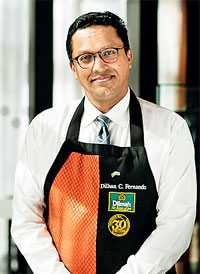
The story of Sri Lanka: It’s the story of ‘Rebirth’ because, whilst yes, on the surface it doesn’t look especially optimistic right now, Sri Lanka is a country with enormous natural resources and wealth in terms of what the world seeks today, whether it is at the tourism level or the product level; the spices, the herbs, the teas, the ayurvedic heritage, etcetera.
The story of Dilmah: It would very much be ‘Overcoming the Monster’ because this is the situation we encounter on a daily basis, the ‘Monster’ being the forces of commoditization, big business, the relentless pursuit of discounting. So we have multiple monsters, whether it was the conflict that our country faced, or the fact that there were predatory colonial economic interests that exploited the industry, or whether it is the retail environment today. I wouldn’t say that we have eliminated the monster, but we are in the process of keeping it at bay.
Eduard Hempel, Founder & Director, Tamba Villas
“‘Rebirth’ for Sri Lanka, which can once again become a leader in South Asia. Tamba is on a ‘Quest’ with a clear vision to develop a balanced product” 
The story of Sri Lanka: I would like to think that having ‘Overcome the Monster’ the process of ‘Rebirth’ is the next story. There’s a potential narrative of a reversion to level, and if you look at Sri Lanka’s very deep and wealthy history, it has been a leader and one of the most successful economies in South Asia. It can be a leader in the world but in a very unusual and different way as we move into very unusual and different times.
The story of Tamba Villas: Tamba is on a ‘Quest’. We have a vision to harmoniously develop a balanced product that embraces the best of the old world of Sri Lanka with the best of the modern world. Our Sri Lankan colonial/Geoffrey Bawa style villas in Thalpe have many of the old values, but also the ability to lock and leave and experience the delights of modern life.
Professor Nira Wickramasinghe Chair/Professor of Modern South Asian StudiesLeiden University
“We need to tame the Monster”
The story of Sri Lanka: I feel you should include ‘Farce’! The story I feel closest to describing Sri Lanka’s present and future is ‘Overcoming the monster’. We need to overcome many monsters: among them, the greed for power and assets in all walks of society and the disregard for complexity which allows the crowning of mediocrity. We need to create a citizenry that will say loud and clear to the corporate sector that building condominiums and megacities is not the type of development they want and put forward an alternative vision of sustainable and green development with smaller cities with less cars and less pollution like the Netherlands, free public transport like Luxemburg, a different work culture, and a quality of life distributed among all people. For this, we need to nurture the critical thinking that is being slowly destroyed by the lack of investment in education and universities in this country. So much could change if the large private companies in the country together created a ‘foundation for excellence’ and used it to send brilliant young people for PhDs abroad with the understanding that they come back and infuse a home institution with their knowledge. This would certainly help tame the monster.
Rajiv Meewakkala Chairman, HDFC Bank
“For Sri Lanka, the big monster is our political culture. HDFC lost its way but is now undergoing ‘Rebirth’” 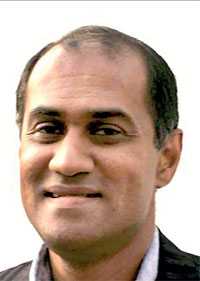
The story of Sri Lanka: It’s ‘Overcome the Monster’ currently and into the future. The big monster here is our political culture. Unless that is changed and a different set of values and principles are brought in, this country cannot move forward. I think people are now quite aware of this and there is some will among the general populace to change this.
The story of HDFC Bank: HDFC was set up to support the low/mid-income housing market but the bank wasn’t able to perform its role because it didn’t have access to low cost funds and therefore wasn’t able to lend at an affordable market rate. I think this is a ‘Rebirth’ story because it started with a certain role, there’s now acceptance that it hasn’t been performing that role, and so we’ve started another journey that I’m pushing that very hard. We lost our way, but we’re back on the journey.
Dharshan Munidasa
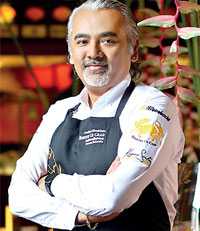 “‘Rebirth’ in 2009 gave us the space and freedom to achieve and enjoy things we couldn’t previously. Challenging the established norms of the hotel industry – that’s my ‘Overcoming the Monster’ story”
“‘Rebirth’ in 2009 gave us the space and freedom to achieve and enjoy things we couldn’t previously. Challenging the established norms of the hotel industry – that’s my ‘Overcoming the Monster’ story”
The story of Sri Lanka: Sri Lanka experienced ‘Rebirth’ in 2009. Depending on how old you are, rebirth may be pre- and post-independence, but for me, growing up during the war, the demarcation line is between war and peace. I was 12 years old in 1983 and grew up not knowing what peace was in Sri Lanka. But when it dawned in 2009, it gave us space and freedom to achieve and enjoy things we couldn’t have previously, such as moving the army barracks out of the Dutch Hospital and opening a restaurant inside it. We’ve had so many tragedies in the past, but over the last decade I see a distinct rebirth from dark to light, war to peace.
My Story:
When Nihonbashi opened in 1995 I had to dispute the entire theory that hotels served better food than stand-alone restaurants, so my story is largely ‘Overcoming the Monster’ and the monster for me is the hotel industry, which served food that Colombo accepted as the benchmark. No one pushed the envelope, hardly anyone tried new things, no one looked to ingredients. Walking the shores of Sri Lanka looking for seafood was a rarity for a chef, let alone a restaurateur, and I did this everyday with Nihonbashi. In other countries you don’t have the luxury of amazing, fresh seafood on your doorstep, but it was taboo to step into the dirty markets of Pettah. The thinking was ‘I’m a chef in a hotel, it should come to me through purchasing and be accepted at the receiving bay’. You still find this old-school thinking and cultural stigma the higher up you go. Hardly anyone has a strong connection to ingredients or a serious passion for quality.
Dr Michael Roberts Adjunct Associate Professor, Anthropology Adelaide University
“Sri Lanka is a continuous story of ‘Tragedy’ based on vengeance” 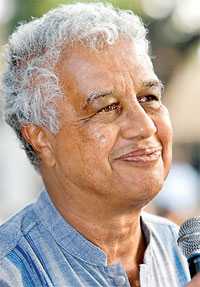
The story of Sri Lanka: It’s the story of ‘Tragedy’: not one act of self-destruction, but several; not a single linear story, but an up-and-down continuous tragedy that is self-inflicted. The whole political system has buggered itself at various points; there was a coup attempt in the 1960s, the JVP attempts in 70/71 and again in the 80s, and of course the Tamil movement. I think the problem with Sri Lankans is vengeance. Take premeditated murder in Sri Lanka; there’s a lot taking place through kapuralas. Some of the Marxists and Liberals in Colombo are so frightened by the Sinhalese Right, who are admittedly quite frightening, that they don’t see any danger from the Tamils abroad and in Sri Lanka, who are now also seeking vengeance and will not stop. There was the Sinhala Only movement, which included Sinhalese Buddhists as well as Sinhala Christians. I see this story playing out into the future, and not just set in Sri Lanka. What are we going to do with the extremists who have been feeding off each other in the Sinhala and Tamil diaspora? We’ve been doing that for seventy years. How do you get rid of that?
Angeline Ondaatjie Director, Tangerine Group
“It hasn’t planned out the way we wanted and Sri Lanka is now a tragic Comedy; the Tangerine Group’s story has been ‘Rags to Riches’ but going forward, it may become the ‘Quest’ in a crowded market” 
The story of Sri Lanka: I’d like to say ‘Rebirth’ because I’m an optimist, but if you look at the recent political crisis and that it’s been nearly ten years since the war ended, I’m personally disappointed by where we are and where we should be. Collectively, we’ve made alot of mistakes and I don’t know if we’ve learnt from them. The ‘Rebirth’ has happened, but it hasn’t resulted in a happy ending or a really positive future. Can you actually say we have one? I don’t think so. We definitely overcame something that for 30 years we never thought would happen but it hasn’t planned out the way we wanted it to. I think we’re in a tragic Comedy now, but where we need to end up is the ‘Quest’.
The story of Tangerine Group: It’s a ‘Rags to Riches’ story. My father started with nothing, he literally had a few rupees in his pocket. The concept of a finance company was barely born when he began Mercantile Investments but from there he went into lots of other businesses. He invested in Nilaveli Beach Hotel, saw there was potential and started Tangerine Beach Hotel and Royal Palms, and then leveraged other assets to acquire Grand Hotel. He did a lot of deals which at the time people probably didn’t understand, but they actually made sense. He got rid of something to make something better. But going forward, since our founder is no more, there’s a challenge and I think we have to look at a ‘Quest’ in what is also a crowded market.”
Asoka Hettigoda Managing Director, Siddhalepa
“Sri Lanka has many monsters to overcome. Siddhalepa’s ‘Rags to Riches’ story is about the creation of an industry, community, and the opportunities for others to follow” 
The story of Sri Lanka: The most compelling story today is ‘Overcoming the Monster’, and this monster is something we have created within us. There are several elements to it: first, corruption. I was recently reading that a girl from Anuradhapura who was applying for a job at a CWE outlet had to get a letter from the area politician. It had nothing to do with her qualifications or experience. Then there’s a lack of innovation. Although we talk about our ancient history and the engineering marvels of the dagabas and waterways with gradients of one inch per mile, that innovative culture died and today we’re left with a country of copycats. The monster also makes a few privileged while 99% of the people remain underprivileged and the disparity is always maintained and widened. That’s why average Sri Lankans become top performers when they migrate to other countries. They have left the monster behind.
The story of Siddhalepa: My father and grandfather took something that people didn’t consider valuable or fashionable, something that wasn’t considered to be what affluent and educated people would do or patronize, something that was an old story, and created an entire industry with it. But Siddhalepa’s ‘Rags to Riches’ story isn’t only about us. It’s about an entire community that has been created and carried forward into the future, for the next few generations, as we create opportunities for them to also follow our path and enrich the nation.
Petar Petrovic Director/Owner, Sri Lanka Sotheby’s International Realty
“I would like to think ‘Rebirth’ for Sri Lanka. Sotheby’s combined knowledge, competence and experience is a rich story of ‘Voyage & Return’. 
The story of Sri Lanka: I would like to think ‘Rebirth’ as Sri Lanka moves into the future. It had the potential to become a major tourist destination and was ranked with Thailand and Indonesia in the 1970s, but because of the things that happened over the past 30 years, it just never took that leap. Now, with stability, it’s exploring how it can move into the future. It’s not as straight-forward as that, of course, and stories of monsters can come into it, but I’d like to think that’s where Sri Lanka is today.
The story of Sotheby’s Realty: It’s ‘Voyage & Return’. The Sotheby’s brand has a very rich history: it started as an auction house in 1744, it was the first listed company on the New York Stock Exchange, and it’s been at the forefront of art and antiques. Today, we’re leveraging our combined knowledge, competence and experience to transform the luxury market of extraordinary properties around the globe and positioning Sothby’s as the leading luxury real estate brand of the world.
Nihal Fernando President’s Counsel
“Sri Lanka needs to encourage new thinking and be responsive to change” 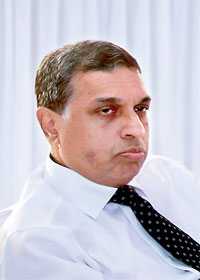
The story of Sri Lanka: It’s the story of ‘Voyage & Return’, particularly for the future, because it’s not the strongest of the species that survives, nor the most intelligent, but the most responsive to change, and that is exactly what we need right now. Singapore thinks 50 years ahead and always encourages innovation. The NUS invites Americans, Europeans, and outside researchers who have the expertise and technical know-how to their country: they are given permanent residency and their research is funded. That’s the model this country needs to have and most of the people who are involved in governance are trying to do that now. They want to change and innovate, but it’s difficult to achieve consensus. Lee Kuan Yew also managed Singapore as if he was the managing director of Singapore (Pvt) Ltd. We also need that type of model.
Muhunthan Canagey Investor and Entrepreneur
“Sri Lanka’s future is being birthed with alot of positivity. My story is the richness of experience I’ve gathered as an entrepreneur”
The story of Sri Lanka: We’ve ‘Overcome the Monster’. We had a civil war and a horrific ending that wounded people from every race, religion, and part of the country with enough grief for the next two generations. But we’ve also reached ‘Rebirth’, moving from a lack of social justice to having processes that benefit the mass of people in a fair and equitable manner. There was a recent challenge and threat to our democracy but people successfully fought against that. Right now, our future is being birthed with a lot of positivity and people are looking at everything progressively. We know the past, but we’re setting sail on a new forward journey with great fundamentals.
My story: I started by borrowing Rs 250,000 from my dad in 1989 as a 15 year old boy. I set up my first company and then I paid him back. I’ve learned things by interacting with people from different countries around the world; I’ve been in the public sector, where there are lots of lessons to be learnt, and I’ve been in the private sector. I’ve made the right decisions as an entrepreneur, I’ve made very bad decisions, but I’ve learned from it all. And what you learn from this is that it’s not what you’ve made or earned monetarily, but it’s the richness of experience you’ve gathered over the years, and how you share that with family, friends, colleagues, and society so that it can be taken to the next generation. My story would have to be ‘Voyage & Return’.
Sunil Perera Vocalist/Songwriter/Composer, The Gypsies
“It’s not going to come right. This country has no future” 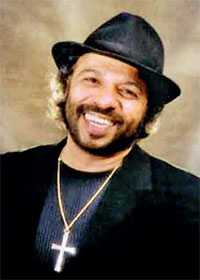
The story of Sri Lanka: We gained independence 71 years ago; today, we’re in debt to the entire world. The UNP and SLFP governed Sri Lanka during that time and they are 100% answerable for the mess we’re in today. There’s no system here, and they don’t want to create a system either. Without that, a country can never move forward and progress. There are MPs crossing over for enormous amounts of money; they’re offered cabinet portfolios without any consideration of their capability and experience. Their own family members and friends run their offices without any knowledge or qualifications. They should have some vision; they have none. We can’t overcome this crisis because the two parties aren’t focused on doing that and just want to cling to power. To date, not a single politician has gone to jail. Not one. It’s an I-scratch-your-back-you-scratch-mine attitude. I had a lot of hopes when I backed the current president in 2015, but I’m ashamed that I did. It’s going from bad to worse, and it’s not going to come right either. This country has no future.